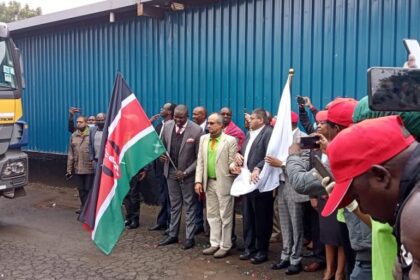MESHA mourns award-winning journalist Elizabeth Merab
MESHA mourns award-winning journalist Elizabeth Merab
Farmers roll their sleeves as Kenya flags off its first batch of fresh avocados to China
By Tebby Otieno (tebbyotieno62@gmail.com)Grace Karanja could not hide her excitement as she…
Conference of the future: A journalist’s perspectives on the Fifth MESHA African Conference of Science Journalists
By Tebby Otieno I tebbyotieno62@gmail.com As the MESHA Fifth African Conference of…
Institute vouches for protection of sandalwood, a rare hard wood
By Tebby Otieno | tebbyotieno62@gmail.com Nick Lenyakopiro grew up knowing East African…


